In one of the more ambitious projects STH has undertaken, we have a Huawei TaiShan server to show you. What makes this server more interesting than being banned in the US, is that the CPUs it uses are Arm server CPUs from Huawei/ HiSilicon. Specifically, this is a Huawei/ HiSilicon Kunpeng 920 server that was one of the first Armv8 server CPUs with up to 64 cores and PCIe Gen4 support. In terms of project status, this server has been very finicky, something we covered in the recent Solidigm D7-P5520 7.68TB PCIe Gen4 NVMe SSD Review on x86 Arm and Power9 piece. So instead of a review at this point, we are going to approach this more to just document what we found and discuss what makes this banned server unique. As we went through the hardware configuration, it was clear that this server was very different, and there was a ton to cover just looking at the hardware.
Huawei TaiShan 200 2280 Server Overview
We are going to split our hardware overview into two sections. We will have an external and internal overview. On the internal overview, we are going to deep-dive with more photos than normal on some of the really interesting non-CPU components. There will also be a second piece dedicated to the Kunpeng 920. If you prefer to listen and see more shots via video, we have a video for this:
As always, we suggest opening it in its own browser, tab, or app for the best viewing experience. There are a few angles in the video we do not have pictures of just due to the nature of video.
Huawei TaiShan 200 2280 External Server Overview
Starting with the front of the server, this is a 25-bay 2.5″ design but we only had 24 drive trays. That is a fairly standard configuration for 2U servers, at least until we get into the EDSFF era.
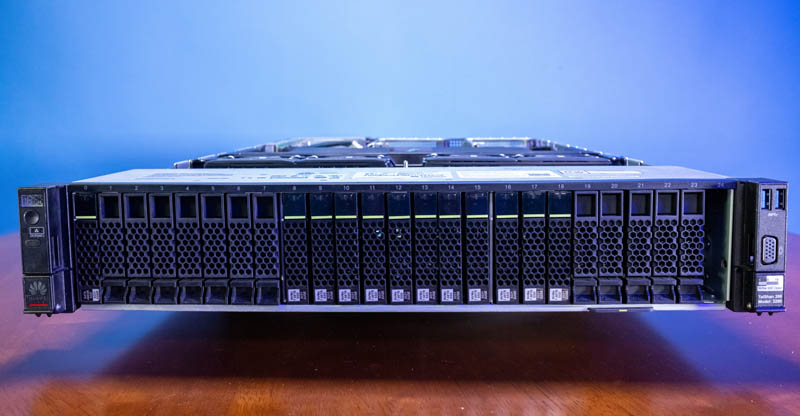
In this server, eight slots are NVMe while the other slots are SATA/ SAS.
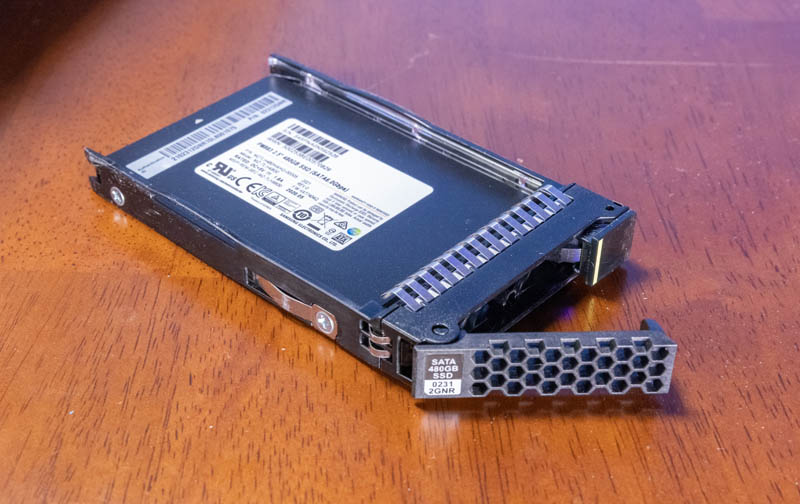
Something that was surprising is that the drive trays were not tool-less. They still require screws. Huawei also uses drive blanks like Dell EMC, HPE, and Lenovo rather than just providing drive trays like Supermicro, Inspur, QCT, and others.
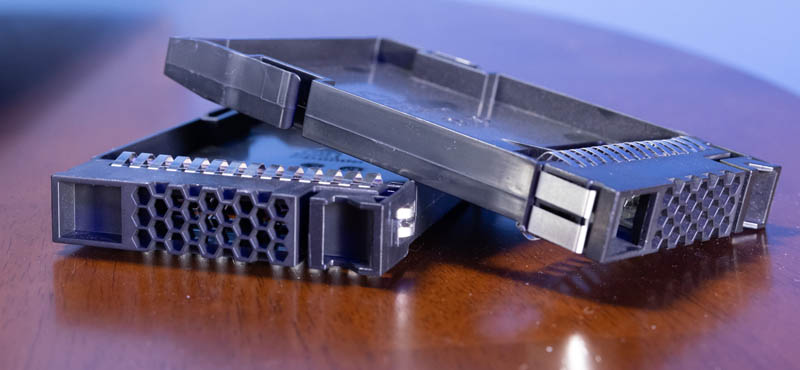
While this is a TaiShan 200 2280, this is the label for the part with K22R-02.
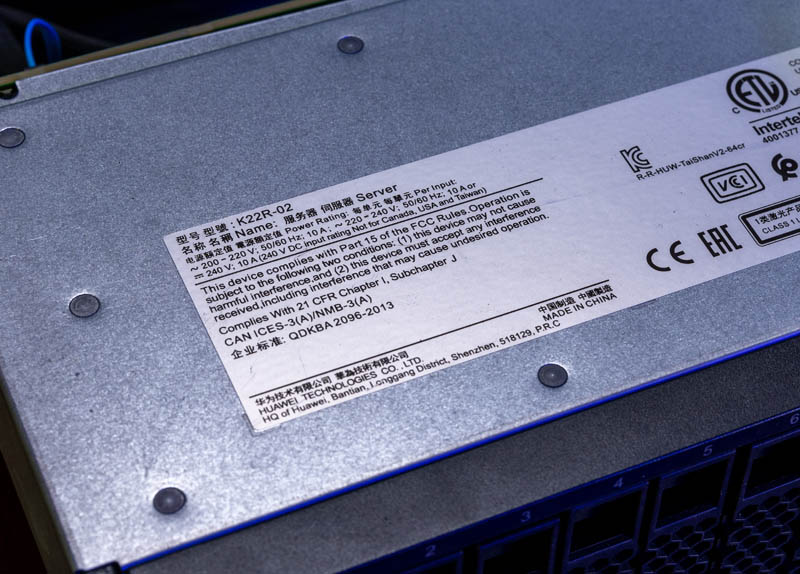
On the left side, we get the Huawei logo, power, and status LEDs/ LCD.
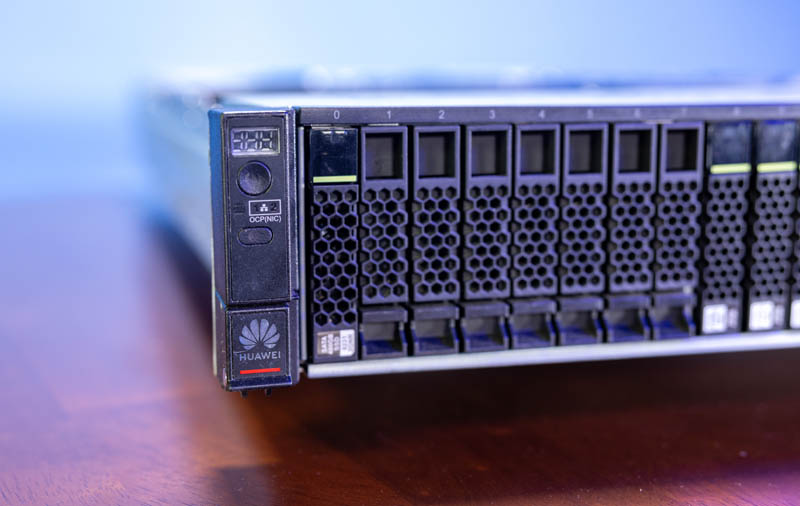
On the right side, we get a VGA port and two USB 3.0 ports. Most servers we review have at most a single front USB port, so that is a little bit different.
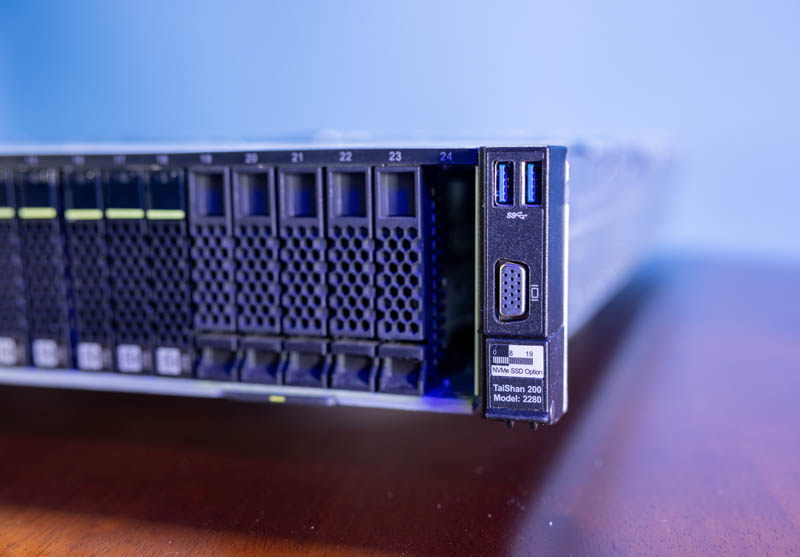
Moving to the rear, things start to get a bit more exciting. One can see that there are eight full-height PCIe slots, but only one can be used for a card.
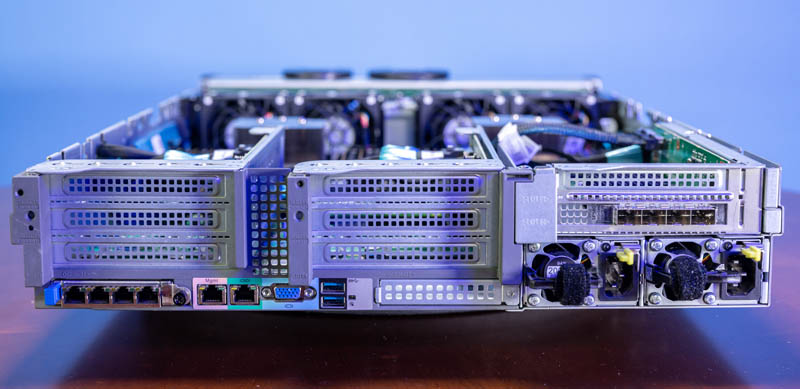
Primary networking is provided via two OCP NIC 3.0 slots. We will deep-dive into this quad port 1GbE solution, but let us just say it is one of the most interesting solutions out there.
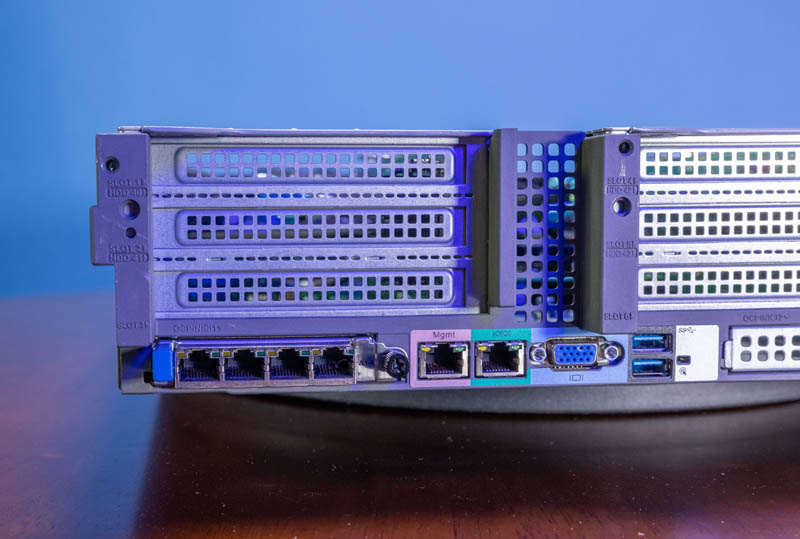
The main I/O block has management, RJ45 serial, VGA, and two USB ports. This is a standard stack except we rarely see the RJ45 form factor serial ports in servers. Those are more common in switches and firewalls. That section is connected to a PCB with a chip we cannot find information on via Google, and we will go into that in our internal deep-dive.
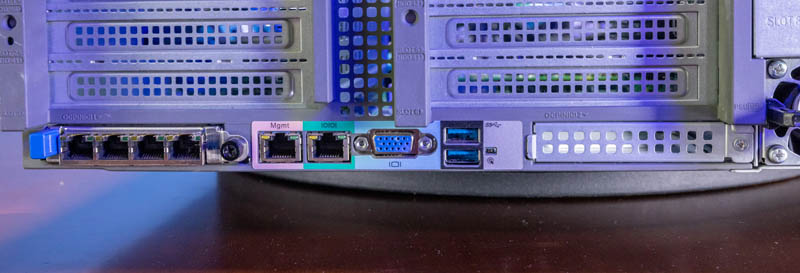
The other OCP NIC 3.0 slot is to the right of the I/O block.
In Slot 8 we get a quad 25GbE port HNS card.
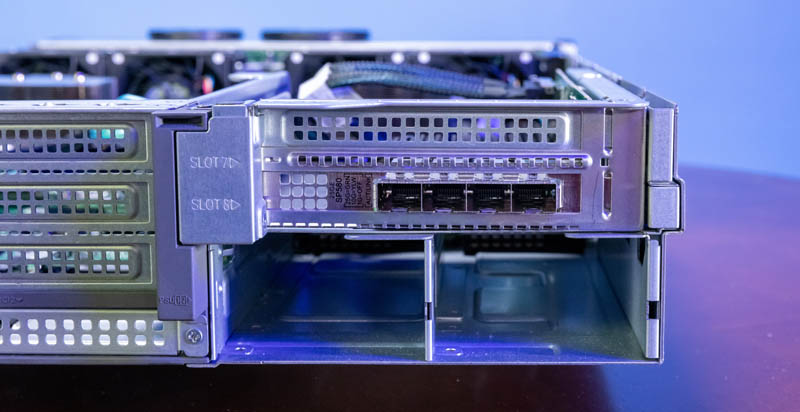
One of the two power supplies got damaged during shipping. This one has many ratings and certifications, including the 80Plus Platinum certification. It is also a 200V+ power supply so it is not meant for lower power 110-120V North American racks.
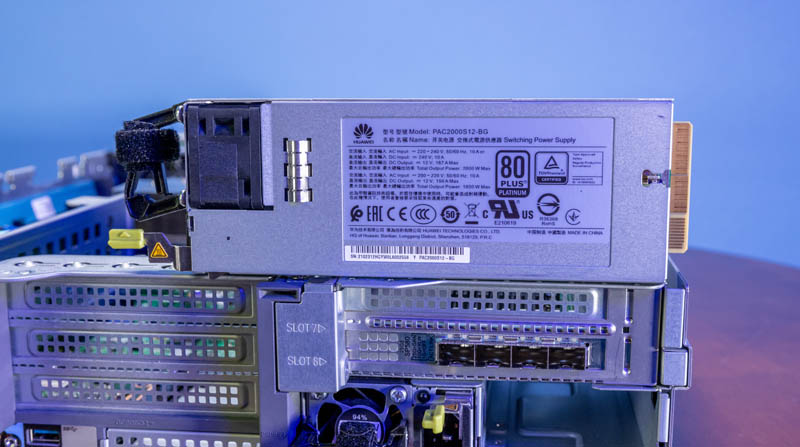
As exciting as that is, the more exciting aspect is really what we see inside the server. From the outside, this is fairly standard. Once we get inside, things get interesting. Let us move on to that.

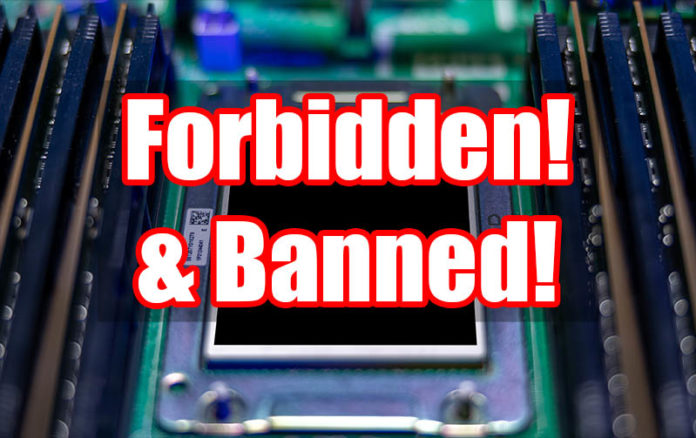



Interesting read. Very strange that the BMC chip is undocumented. Furthermore in the blockdiagram they talk about a different model chip.
I did spot a small error in the writing:
Lenovo servers are probably a step above Huawei, then this Huawei server.
You may not have gotten far enough along in this test for the question be applicable, but does STH routinely monitor network-connected devices for “unexpected” traffic?
@Joeri – I made that a bit clearer. I agree it was chewy wording.
@Bob Niland – we are not tooled to check like a security research firm is. I would expect what you are looking for is rather sophisticated and we do not have a team that can sift through live traffic for days.
Patrick, please, stop filming hanging hardware.
There is no details visible and earlier way of showing thing was a lot better.
Please return to blue doors.
Actually it’s 25-bay backplane.
That’s a catchy headline!
But I fail to find any substance behind it: why exactly is it both forbidden and banned? And from where and under which penalty?
And just in case it’s explained in the video: I never watch those. I come to STH precisely because it can be read.
@abufrejoval
Huawei is sanctioned in the US and you can’t import it legally.
Wow these comments are off the charts. Such an out of control crowd of nerds going squirrelly over circuitry from abroad. I am lost for words. How could you keep your comments section open even after addmjtting you expected such an obvious culling of naysayers … …. …
;)
The worst thing is the cluelessness of the outright IP theft from them. HP had lots of patents on Moonshot and now they co-developed a machine with Fujitsu that looks at lot like the Huawei here. Aren’t y’all tired of the Chinese theft of intellectual property?
I fully expected more Engrish text in this server, but there is no American Megatrands or similar text to be found.
The lscpu result shows 4 NUMA nodes. This is a 2P server, so is that BIOS configuration option or is it just the way the CPU is designed?
What’s a “retimer” in this context? Its a legitimate chip for re-timing signals, but in this usage might be typo ?
@chris s I just wanna know what they’re not showing
@criggie that’s what they’re saying. you’ll see servers like dell’s and others use pcie retimers when they’re taking signals from pcie slots and then converting them to cables. there’s signal loss when you go cpu mobo->riser so then when you go cpu mobo->riser->long cable->front->nvme back plane->nvme SSD you need to boost the signal. a lot of servers use pcie retimers because of this. there’s also loss not just because of distance but also they’ve got loss from each connector
“HUR DUR Evil chinese communist theft of intellectual property !
-Written from my iPhone”
LOL
Sorry Yankees, we Chinese have surpassed you. Talk all you want about theft. You stole earlier tech from us: guns, paper, gunpowder, silk, steel, kite , etc
If it is banned how was it imported?
@ dalong Ning
We stole from you lol… Chinese business and government would steal and clone your grandma if they had a chance and could make profit!
No you have not surpassed us… our cpus, phones, cars and etc are alot better then the crap your country makes.
@Jay the funny thing is there has been 100s of cases where you “Chinese” work for many tech companies and have been caught stealing and sharing what “We” make, if your tech is so superior then please answer this, what do you guys need with anything we have created?
Only reason it’s banned in USA is that Huawei CPUs are secure and do not have CIA bookmarks, like Intel and AMD. Not even taking about backdoor controller Microsoft Pluton.
Loving these comments. There is a reason why the world needs Chinese chips. Just hope for a peaceful future. May be biased because I’m engaged to a wonderful Chinese person.
Huawei makes everything better than any company in the US can make.
I love seeing folks trying different solutions. Sometimes it works and tech gets better. I wonder if Huawei’s choices will have an impact.